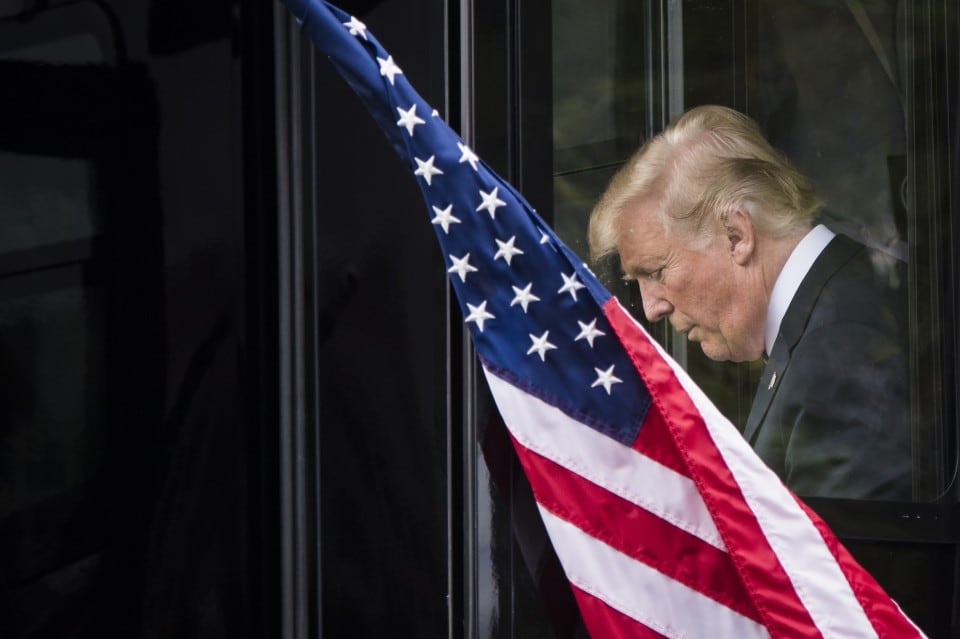Jeffrey Sachs is a professor and director of the Center for Sustainable Development at Columbia University. His forthcoming book, “A New Foreign Policy: Beyond American Exceptionalism,” will be published in October.
American prosperity since World War II has been built upon science and technology breakthroughs spurred by a powerful innovation system linking the federal government, business, academia and venture capital. U.S. innovation policy has been successfully emulated in Europe and Asia, most recently by China. President Trump’s trade war against China aims to slow China’s technology ascent but is misguided and doomed to fail; instead, American prosperity should be assured by doing what America does best: innovating at home and trading with the rest of the world.
The founding text of U.S. postwar prosperity was Vannevar Bush’s report “Science: The Endless Frontier.” In an act of brilliance, America’s greatest president, Franklin D. Roosevelt, asked his science advisor how the great scientific advances spurred by the military during World War II (semiconductors, radar, servomechanisms, computers, cryptography, aeronautics, nuclear science, new medicines and more) should be made public for postwar civilian use. A lesser president would have asked the opposite: how to keep military advances secret after the war.
Bush’s answer was inspired. Out of his thinking, directly and indirectly, emerged the National Science Foundation, the National Institutes of Health and federal aid to education. A new science-based industrial policy was born, one that also benefited dramatically from the arrival of Europe’s greatest scientific minds, chased to America by Hitler and the war.
The U.S. government, wrote Bush, should now take this further and launch a coordinated, large-scale program of scientific education, support for university research, public laboratories and funding for basic science and government-academia-business partnerships for technological advancement.
Postwar military and civilian research and development were intertwined. Great universities such as MIT, Berkeley, Stanford, Harvard and others engaged in federally funded research, and innovations first pioneered with defense spending were encouraged to find civilian outlets. The achievements were perhaps most remarkable in the emerging digital sciences and information and communications technologies, including computer science, transistors and integrated circuits, microprocessors, the Internet, robotics, machine learning and artificial intelligence.
The Cold War spurred the innovation machine in ways best exemplified by the “Sputnik moment” that followed the Soviet launch of Sputnik and then former President John F. Kennedy’s 1961 call for a moonshot. American math and science education was greatly boosted. (I myself was a lucky beneficiary of the “new math” of primary and secondary education in the 1960s.) The moonshot, successfully achieved within JFK’s timeline (“before this decade is out”), yielded massive and lasting benefits in countless technologies including computation, telecommunications, space sciences, materials science, energy systems, medical sciences and more.
Few argued during World War II, the moonshot or the advent of the Internet that the federal government was incompetent and a drag on technology. That great lie emerged first with the demonization of government by the Ronald Reagan administration and enabled the private sector to harvest the profits from government-led innovation. Google cofounders Larry Page and Sergey Brin, for example, carried out their pathbreaking work on National Science Foundation funding and then became mega-billionaires as they privatized the results. In an earlier era, polio-vaccine developer Jonas Salk and others thought it natural to turn their inventions over to the public without private patents attached.
The anti-government rants have now gotten dangerously out-of-hand, causing Trump and know-nothings in the Republican Party to denounce science itself. They attack government scientists who present findings that deviate from Republican lobbies (such as the coal, oil and gas industry). They undermine public support for government investments in research and development. All of this now gravely threatens the U.S. innovation system itself.
In the meantime, American technology successes have been noted by other governments. Silicon Valley became the place to emulate, and there are now many science-and-technology zones in university towns across Europe and Asia churning out breakthroughs. The U.S. no longer stands head-and-shoulders above the rest.
Global growth is now spurred by three major poles of “endogenous” (tech-led) growth: the United States, the European Union and Northeast Asia (China, Japan and South Korea), plus various smaller dynamic locations including Singapore, Israel and others. We should expect still others to join in global innovation. There is no American monopoly on brainpower, excellent training and cutting-edge scientific know-how.
China’s rapid technological advance has stunned U.S. policymakers, especially in the national security apparatus. The “Made in China 2025” program is a brash, confident and yet utterly realistic statement of China’s intention to develop the key technologies of the 21st century in advanced computation, robotics, renewable energy, precision medicine, agriculture and low-carbon transport. One of the most significant is China’s ambitious plan to pioneer a worldwide renewable electricity grid — the first of its kind and scale. Trump’s trade war aims to scuttle China’s impertinence.
Yet Trump’s approach is profoundly misguided. There are three truths about China’s technological vision. First, China is filled with brilliant young people who are equipped with excellent universities, ample government funding and private-market outlets for their energies. China’s technological verve will not be stopped by Trump. Second, China’s advances will benefit, not harm, the world, including the United States, by bringing forward new and highly beneficial technologies like zero-carbon energy, smart vehicles and more powerful computers.
Third, and most importantly, China’s inevitable advances will in no way prevent the United States from making similar progress, but only if Trump and the Republicans drop their anti-science stance, support the American system of government-business-academic innovation and direct efforts toward the true needs of the 21st century, notably zero-carbon energy and non-polluting industries. There is no future in trade wars, hot war or the polluting industries of the past.
This was produced by The WorldPost, a partnership of the Berggruen Institute and The Washington Post.



